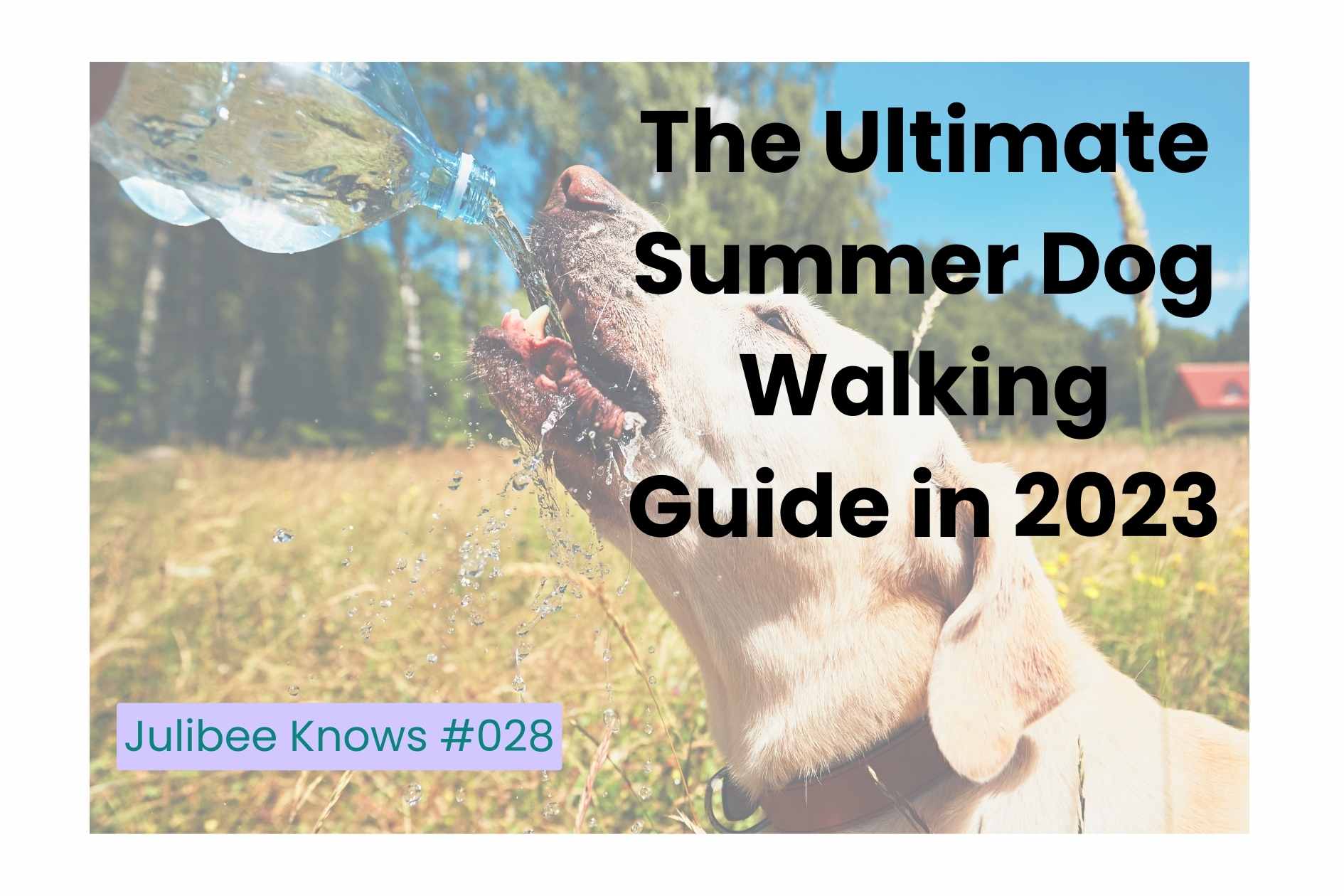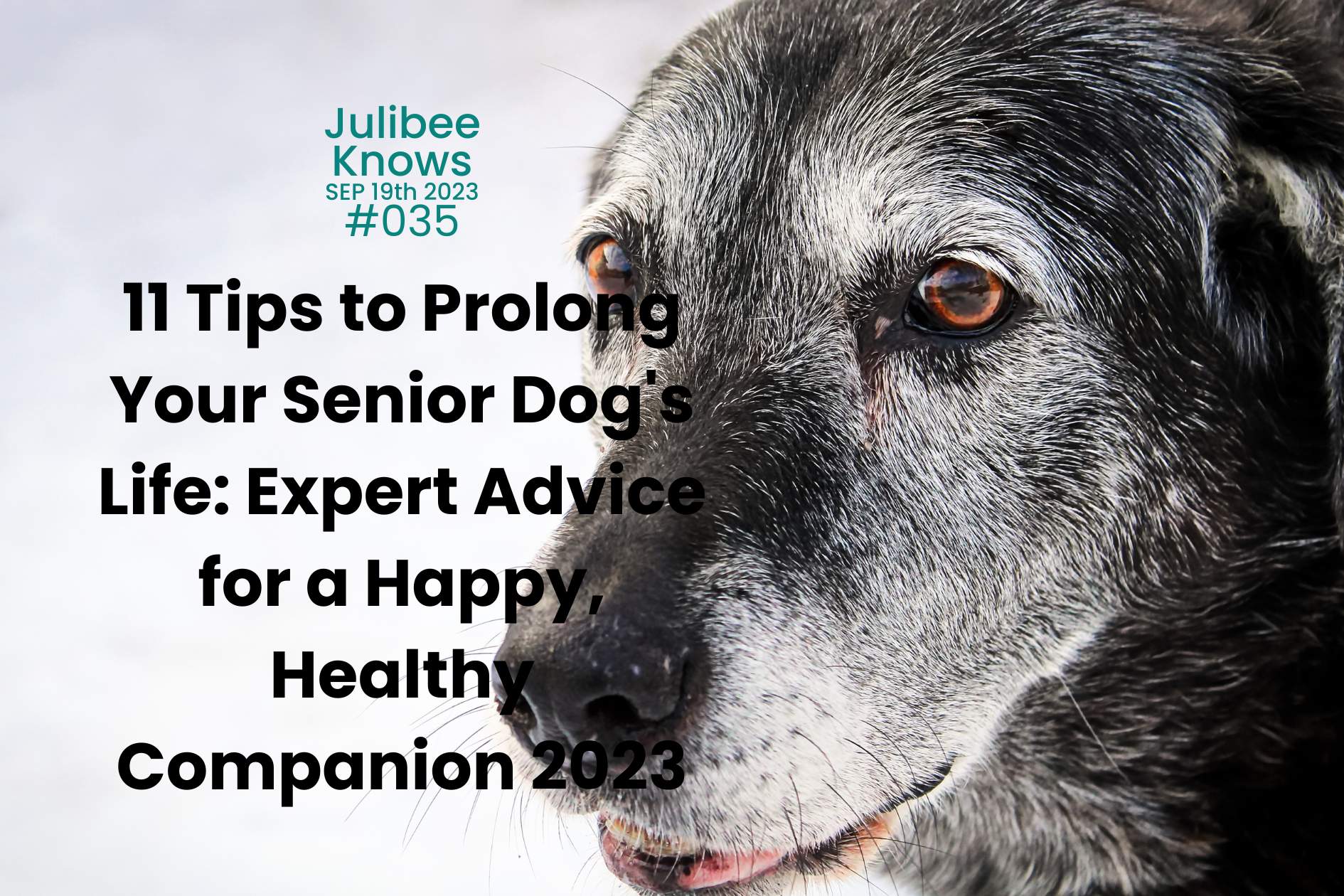
The Ultimate Summer Dog Walking Guide in 2023
Don't let the summer heat put your furry friend at risk! Discover essential gear like cooling collars, beds, and portable water feeders to keep your dog cool. Learn about sunburn prevention, protecting paw pads, and...
Table Content
- Two Facts about Keeping Dogs Cool in Summer!
- 5 Tips to Beat the Heat!
- Tip 1: Water!
- Tip 2: Employ various cooling methods
- Tip 3: Choose the right time for outdoor activities
- Tip 4: Choose suitable summer outdoor activities!
- Tip 5: Beat the heat with food!
- 3 Must-have gears for summer furiends
- Cooling collar or cooling vest
- Cooling bed
- Portable water feeder
- Dog car seat
- Other summer safety pointers
- FAQ
With recent high-temperature warnings across multiple locations worldwide, not only humans but also our furry friends face a range of risks in hot weather. Dogs aren't built for handling scorching heat like us humans. They can't just sweat it out and cool off. Nope, they rely on good ol' panting to regulate their body temperature. But when the mercury keeps rising, our furry friends are in serious trouble. They can literally overheat, just like getting a nasty heatstroke. And trust me, that's a life-or-death situation right there when their body temperature hits a whopping 42 degrees Celsius.
Two Facts about Keeping Dogs Cool in Summer!
Fact 1: Can dogs get "sunburned"?
Yes! Even in summer, many owners still take their beloved dogs for walks or playtime in sunny areas. While heatstroke is the primary risk for dogs in prolonged high temperatures, it's not the only danger. So yes, they can also get sunburned. Certain breeds with shorter, finer, or lighter fur are more susceptible to this risk. For breeds with dense fur requiring grooming, it's essential to be cautious and avoid excessive trimming. It is advisable to visit a pet clinic and have professionals handle the fur. Nose, ears, abdomen, and groin areas are particularly prone to sunburn, and specialized sunscreens can be applied if necessary. Protective gear specifically designed for pets can be used, but if it gets wet, remember to reapply the sunscreen.
Fact 2: Protecting the paw pads is crucial for dogs in summer!
When walking dogs outdoors during summer, we mustn't overlook another temperature-sensitive part: their paw pads. Dogs typically walk barefoot on the ground, and high ground temperatures can lead to burns. Remember the "Five-Second Rule" when walking dogs in summer: Place the back of your hand on the ground, and if you can't hold it there for more than five seconds, your dog won't be able to either. If your dog must be on such surfaces, consider using specialized protective boots to prevent burns. This method also applies to walking on hot sand at the beach.
5 Tips to Beat the Heat!
Tip 1: Water!
At home, provide cool, fresh water at all times, and maintain an appropriate indoor temperature. Avoid playing on balconies or in gardens exposed to direct sunlight. It's essential to change the water in the bowl daily to ensure freshness. When outdoors, avoid going out during the hottest hours. If necessary, carry an ample supply of drinking water for your furry friend (you can add ice cubes in an insulated bottle to keep the water cool).
Tip 2: Employ various cooling methods
At home, use fans or air conditioning: It's a common and effective way to help dogs beat the heat. Set the air conditioner temperature to above 28 degrees Celsius to prevent the dog from getting too cold. When traveling with your pet in a car, ensure the air conditioning is on and the car is well-ventilated. Never leave your dog inside a parked car! We've witnessed countless cases of dogs suffering from heatstroke due to being left in cars.
Tip 3: Choose the right time for outdoor activities
Early morning and evening are the best times for dog walks or outdoor activities. Never let your dog engage in any outdoor activities during midday or afternoon when the scorching sun is unbearable for even a few minutes.
Tip 4: Choose suitable summer outdoor activities!
Swimming? Many people consider swimming as a fun summer activity for dogs, and it can indeed be a great way to keep them cool. However, not all dogs are natural swimmers, and it's important to assess their comfort and ability in the water. Always supervise your dog when swimming and provide them with a life jacket if needed. Additionally, be mindful of water conditions, such as currents or waves, as they can pose risks to your dog's safety.
Indoor games and mental stimulation are excellent alternatives during hot summer days. Engage your dog in interactive toys or puzzles to keep them mentally stimulated and entertained. You can also create indoor obstacle courses or teach them new tricks to provide mental and physical exercise while staying cool.
Tip 5: Beat the heat with food!
Feed your fur baby some cool and refreshing treats, like pears. In traditional Chinese medicine, pears are known for their heat-clearing and soothing properties. And guess what? You'll find this secret ingredient in many dog food formulas, claiming to reduce tear stains. It's like ancient wisdom meets modern pet nutrition! If you're feeling adventurous, you can even whip up some homemade doggy ice cream or grab a special pup-friendly frozen treat.
3 Must-have gears for summer furiends
Cooling collar or cooling vest
when you're out and about, make sure to use a cooling collar or a trendy cooling vest. But remember, they have a limited effectiveness, and science hasn't fully endorsed these doggy cool-down methods yet. So, use them with caution and style!
Cooling bed
When you're chilling at home, get your pooch a cozy cooling bed. Look for ones with cool-touch fabrics or gel-infused padding for that extra chill factor. Your fur baby will thank you for it!
Portable water feeder
Don't forget to pack a portable water feeder when you're hitting the streets. Hydration is key as mentioned.
Dog car seat
When it's road trip time, hook your pooch up with a rad summer doggy car seat. It'll keep them comfy and safe while cruisin' in the car.
Other summer safety pointers
Regular deworming
First off, pesky bugs are everywhere in summer, and they can be a real menace for our four-legged buddies. Keep an eye out for mosquitoes and other critters, as they can transmit parasites and cause allergic reactions. Make sure your furry friend doesn't snack on any insects and choose parks and neighborhoods with regular grass trimming to minimize the risk. And hey, don't forget to follow your vet's advice and keep up with regular parasite prevention.
Regular grooming to maintain their fur
In the summer, plants and flowers are blooming like crazy, and some of them have prickly seeds. These little devils can get tangled in your dog's fur, leading to messy mats and potential skin injuries. So, make it a habit to brush your pup regularly. It'll help remove loose fur, clean up any dirt they've collected, and keep their coat and skin healthy. Bonus point: Less shedding at home.
Nighttime walking visibility
Lastly, let's talk about a safety hazard that pops up when many pet owners take their dogs out for a late-night stroll: cars! Nighttime drivers tend to speed up, and visibility decreases, while our furry friends have this instinctual urge to chase moving objects. So, folks, always remember to use a leash when walking your dog at night. And if you're in an area with lots of traffic, consider finding a quieter route where your fur baby can roam more freely.
FAQ
- Can I shave my dog's fur completely to keep them cooler?
Nah, it's not a good idea to shave your pup's fur completely. Believe it or not, their fur actually helps regulate body temperature and protects their skin from the sun's rays. Instead, opt for regular brushing and grooming to remove any loose hair and keep them cool.
- Why does my dog vomit after drinking a lot of water? What should I do?
Your dog might be chugging water too fast, causing them to gulp air and leading to some tummy troubles. Try offering smaller amounts of water more frequently to prevent excessive drinking. If the vomiting persists or your dog shows other signs of illness, it's best to consult a vet.
- Can I put shoes on my dog to protect their paws from hot surfaces in summer?
While it may seem like a dope idea, most dogs aren't too keen on wearing shoes. But fear not! There are other ways to protect their paws, like avoiding hot surfaces during peak heat hours or using paw balms and protective wax.
- After our walk, my dog is panting heavily and breathing rapidly. Why? What should I do?
Sounds like your fur buddy is catching their breath. Heavy and rapid panting can be a sign of overheating or exhaustion. Find a cool and shady spot, offer them some water, and let them rest. If the panting doesn't ease off or they show other concerning symptoms, consult a vet ASAP.
- What are the symptoms of heatstroke in dogs?
When it comes to heatstroke, there are some red flags to watch out for. These include excessive panting, drooling, weakness, rapid heartbeat, vomiting, diarrhea, and even collapse. If you notice any of these symptoms, it's crucial to act fast and seek immediate veterinary attention.
- What should I do if my dog gets heatstroke?
If you suspect your dog is suffering from heatstroke, it's an emergency, my friend! Move them to a cool place, apply cool (not cold) water to their body, especially the head and paws, and contact a vet right away. Heatstroke can be life-threatening, so time is of the essence!
- Can I give my dog a cool water bath every day to keep them cool?
No, showering your dog with cool water can be refreshing, but daily baths would strip away essential oils from their skin, leading to dryness and irritation. Instead, you can offer them cool water to drink, provide shaded areas, and use damp towels or cooling mats for them to lie on. Keep it cool, but don't overdo it!

